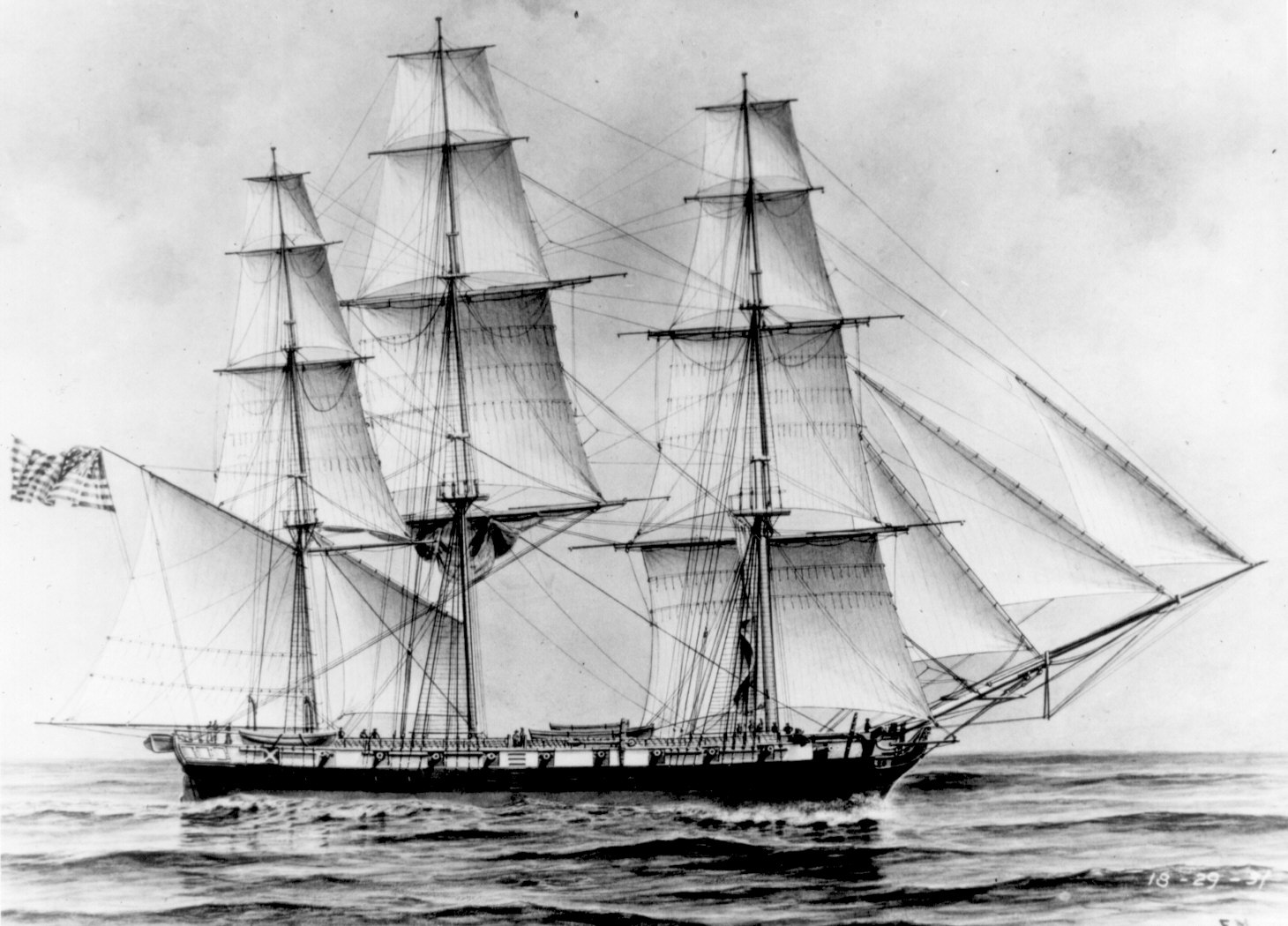Baltimore Jany. 9th 1815 [1814]
Sir,In reporting to you the advancement of my ship I have the honor to state, that we got our topmasts on end to day—that our lower rigging is rattled down, and catharping’d in.
The Hold is nearly stowed.— and I intend our yards shall be across next week. I shall stand in need of my sails from Washington.
Had I my compliment of men, I could be ready for sea in three weeks.—
My residing within a hundred yards of my ship since appointed to her, and giving personal attention to every little thing will account to you for my rapid progress.— The “Erie” has more men, but in other respects the “Ontario” is equally advanced. Indeed we have little the start! With great respect your very Obt. ServantR. T. Spence
From a January 9, 1814, letter by Master Commandant Robert T. Spence to Secretary of the Navy William Jones. The Naval War of 1812: A Documentary History, Volume III, p.19
On March 3, 1813, the United States Congress authorized the construction of six sloops-of-war. Naval architect William Doughty designed three of the six ships and directly supervised the construction of the USS Argus at the Washington, DC shipyards. In Baltimore, Thomas Kemp took Doughty’s designs and began work on the remaining two, the USS Ontario and USS Erie, at his Fell’s Point shipyard.
The Erie launched from the shipyard on November 3, 1813 and The Ontario followed on November 28, 1813. Master Commandant Robert T. Spence, commander of the USS Ontario, spent the winter months of 1814 struggling to recruit enough men to set sail—a delay that ultimately kept the Ontario stuck in Baltimore behind the British blockade of the Chesapeake through the end of the war.
